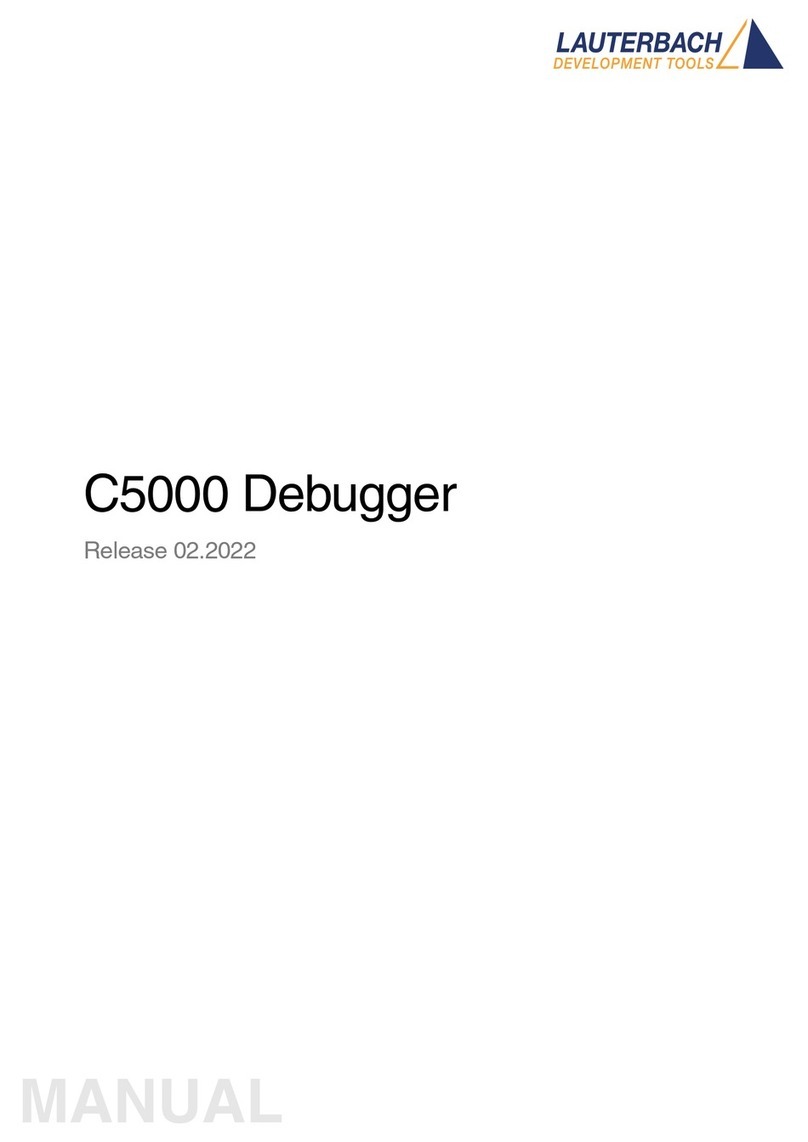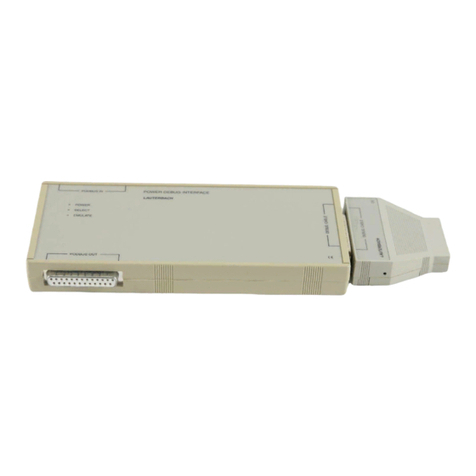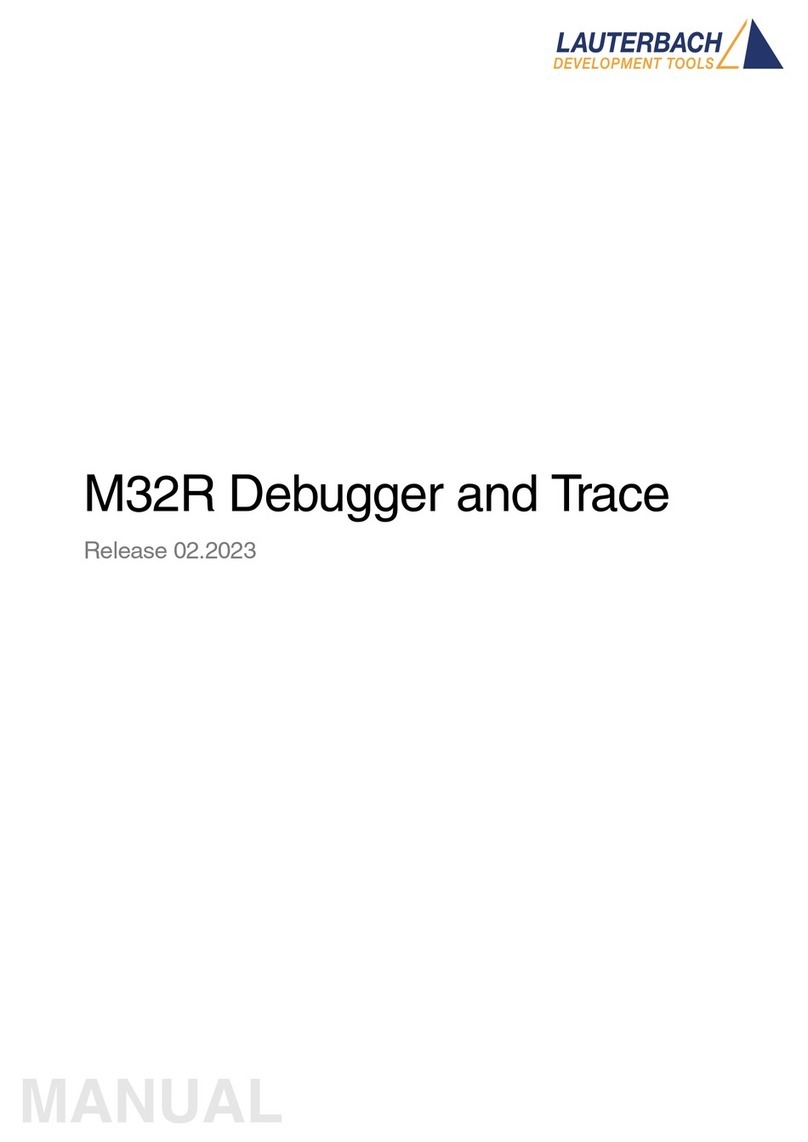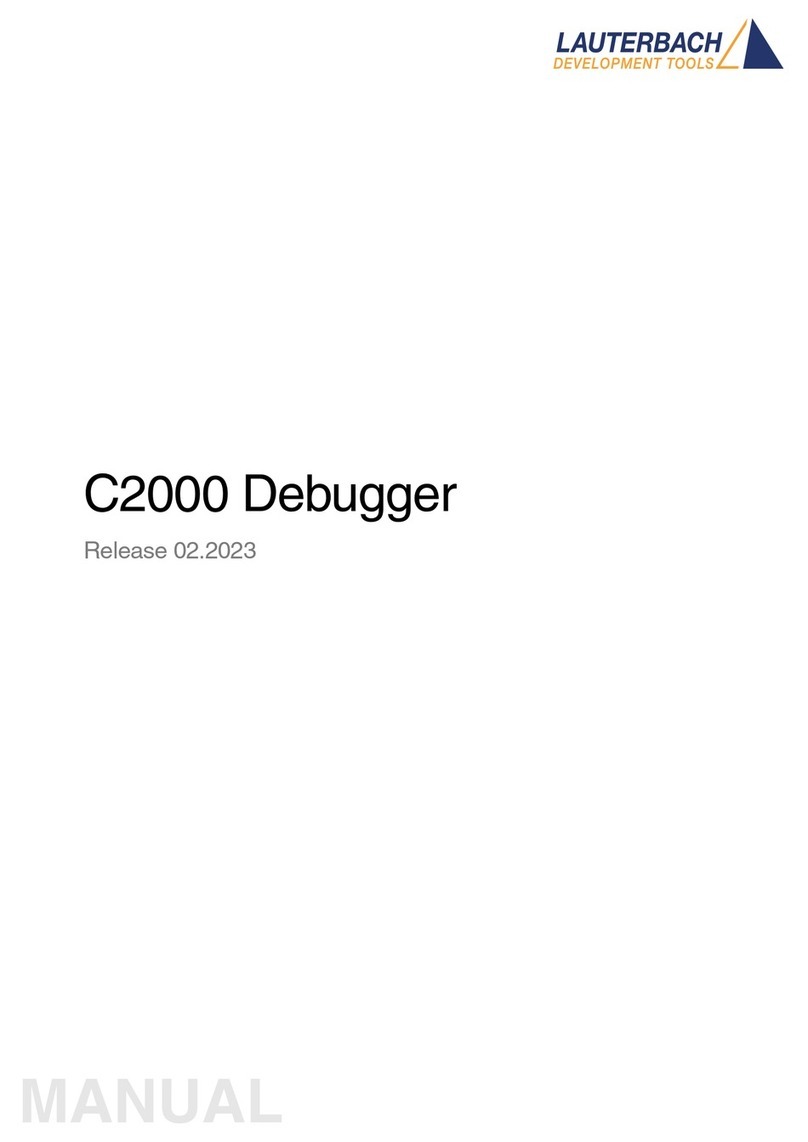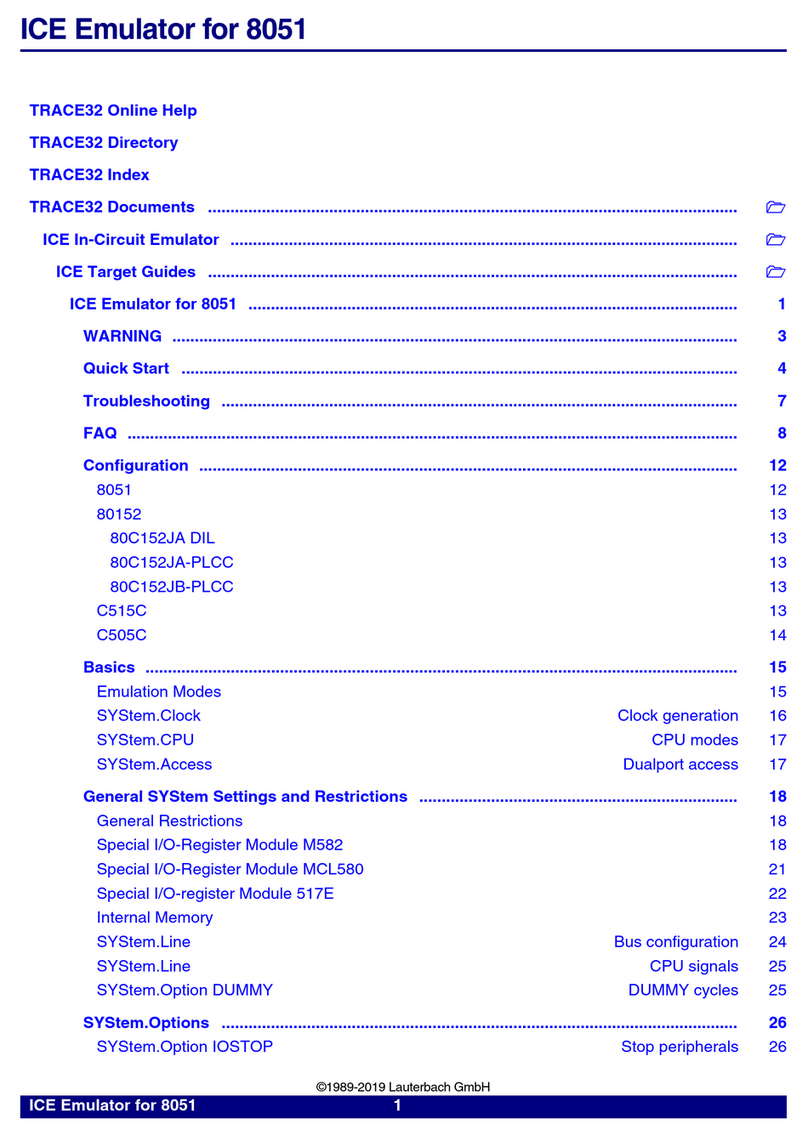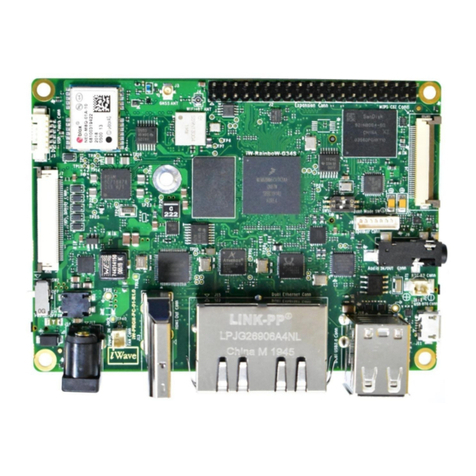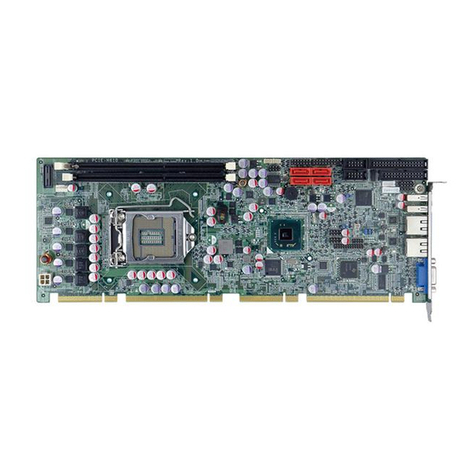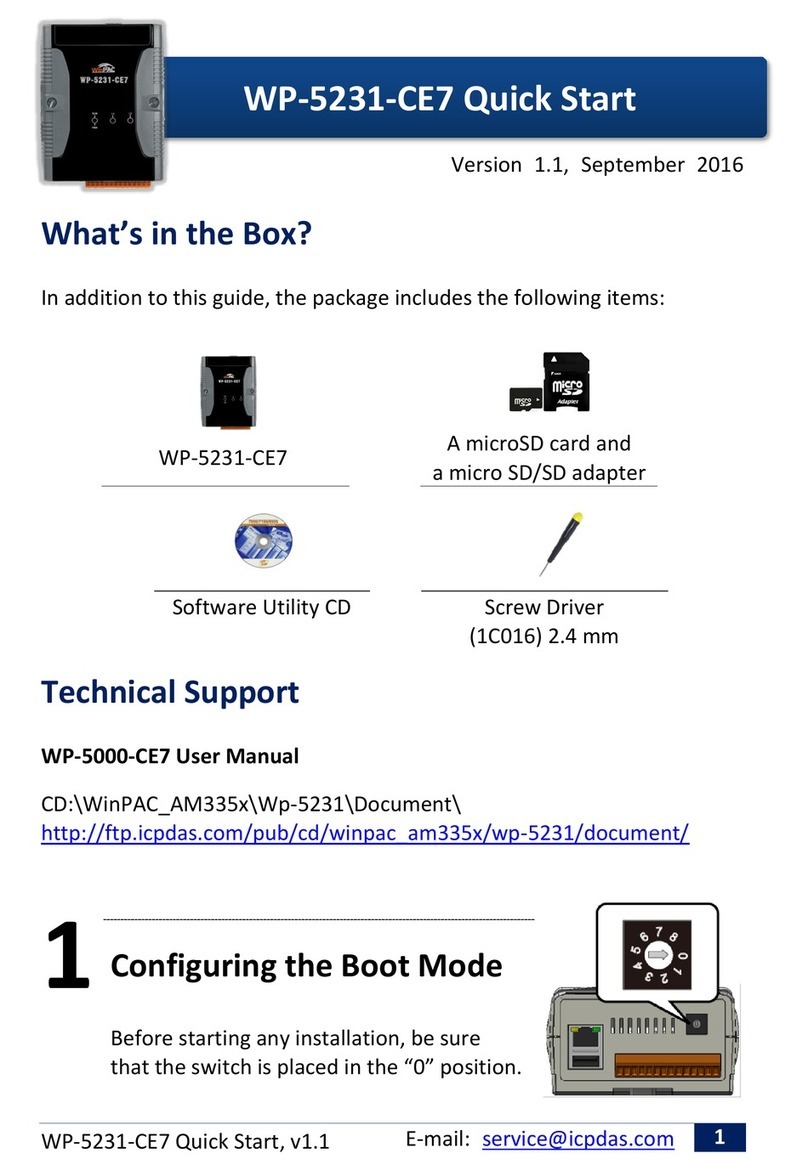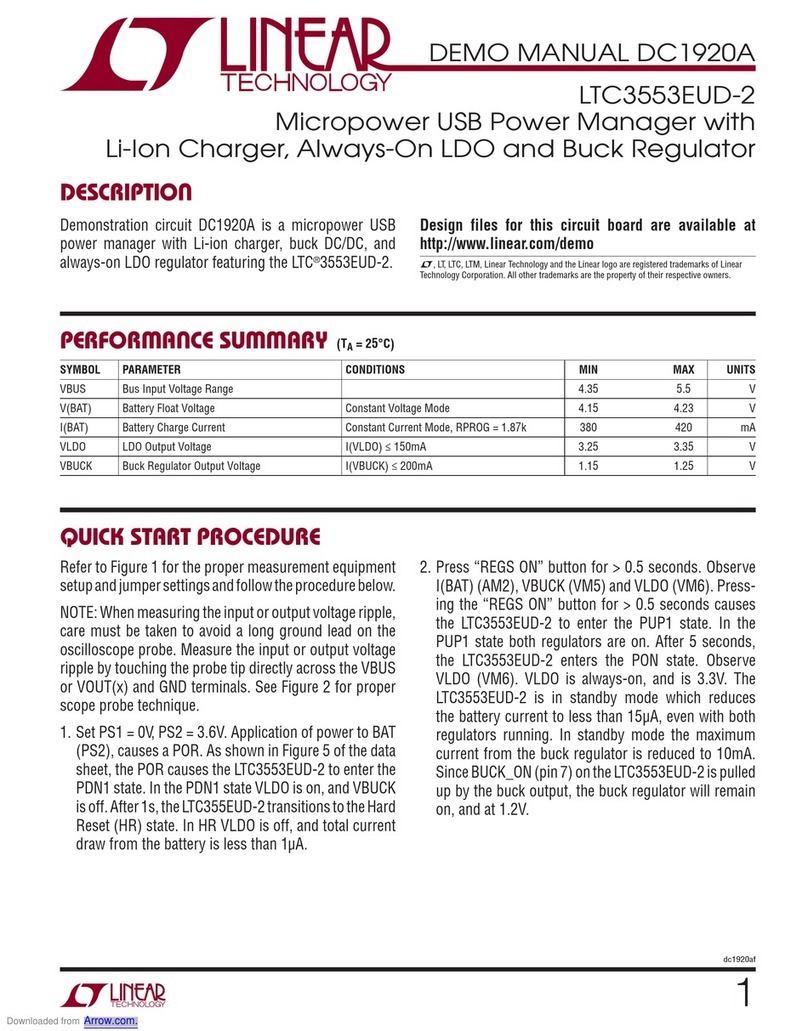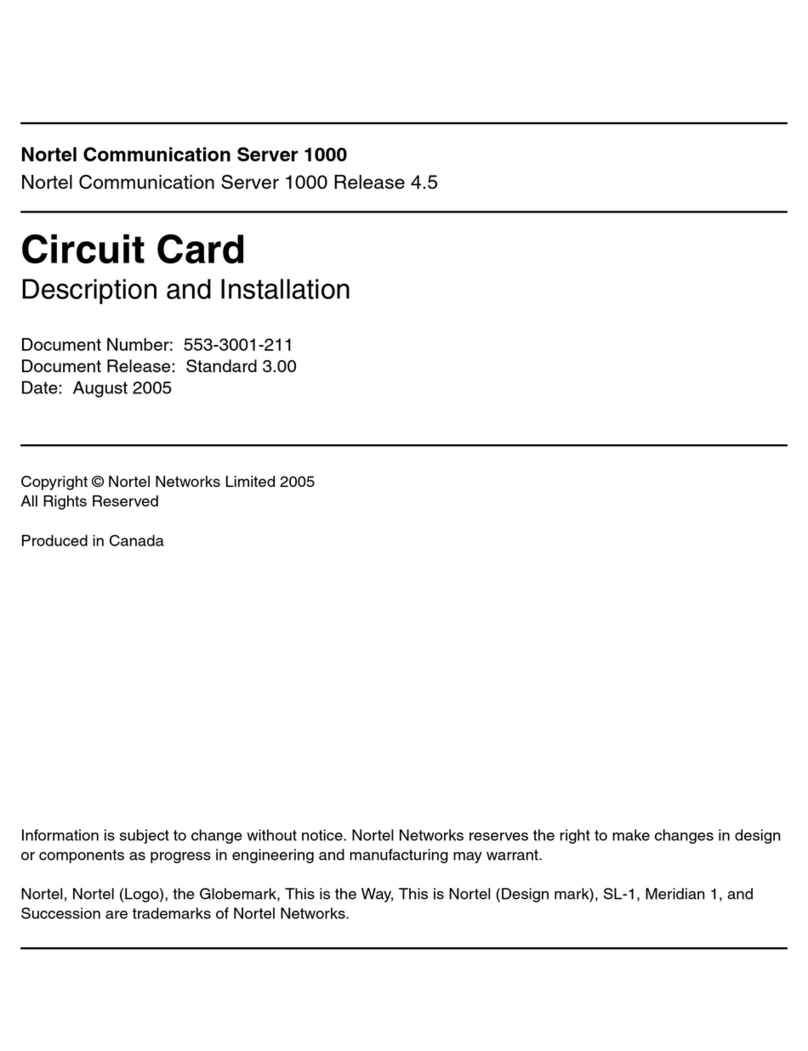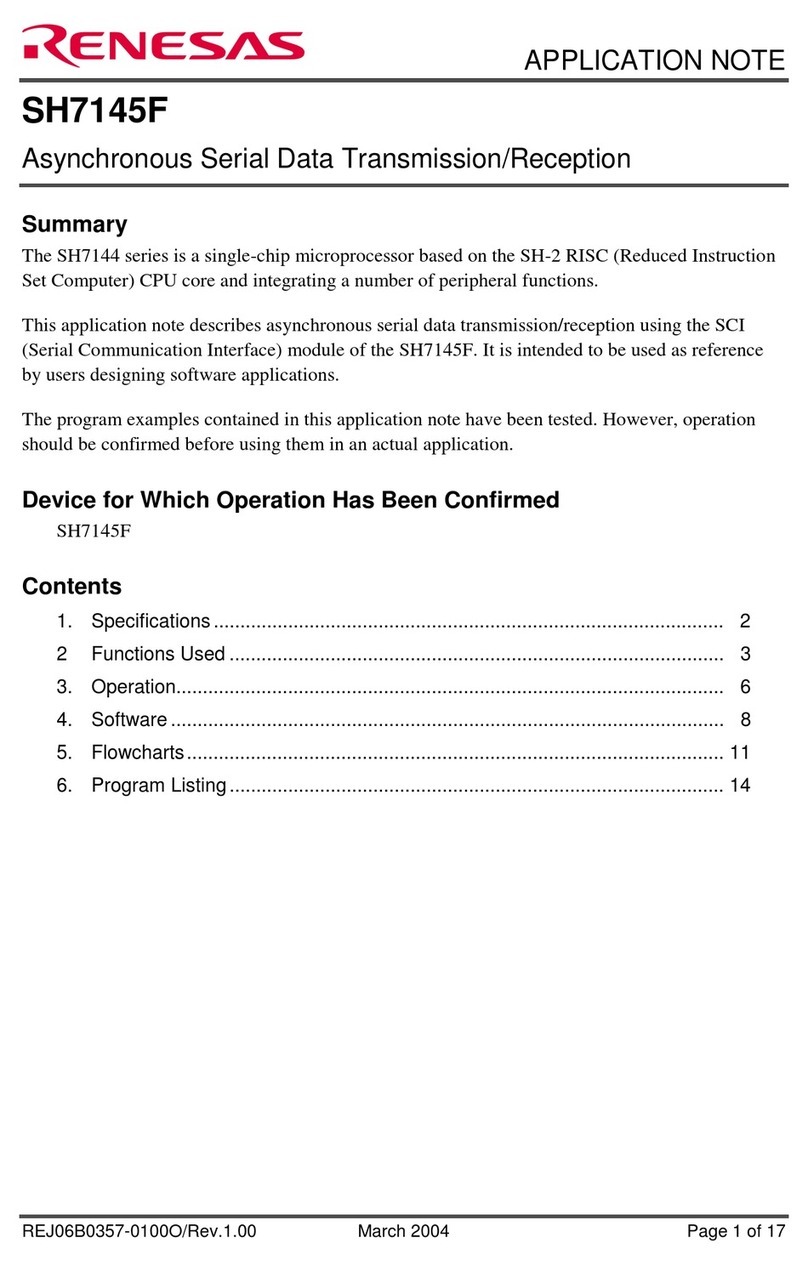Lauterbach STM8 User manual

MANUAL
Release 09.2023
STM8 Debugger

STM8 Debugger | 2
©1989-2023 Lauterbach
STM8 Debugger
TRACE32 Online Help
TRACE32 Directory
TRACE32 Index
TRACE32 Documents ......................................................................................................................
ICD In-Circuit Debugger ................................................................................................................
Processor Architecture Manuals ..............................................................................................
STM8 .........................................................................................................................................
STM8 Debugger .................................................................................................................... 1
Warning .............................................................................................................................. 4
Introduction ....................................................................................................................... 5
Brief Overview of Documents for New Users 5
Demo and Start-up Script 5
Configuration ..................................................................................................................... 6
System Overview 6
Quick Start ......................................................................................................................... 7
Troubleshooting ................................................................................................................ 9
FAQ ..................................................................................................................................... 10
STM8 specific SYStem Settings ....................................................................................... 11
SYStem.CPU Select the used CPU 11
SYStem.MemAccess Real-time memory access (non-intrusive) 11
SYStem.Mode Establish the communication with the target 12
SYStem.LOCK Lock and tristate the debug port 12
SYStem.Option.IMASKASM Disable interrupts while single stepping 13
SYStem.Option.IMASKHLL Disable interrupts while HLL single stepping 13
CPU specific TrOnchip Commands .................................................................................14
Breakpoints ........................................................................................................................ 15
Software breakpoints 15
On-chip breakpoints for instructions 15
On-chip breakpoints for data 15
Memory Classes ................................................................................................................ 16
Target Adaption ................................................................................................................. 17
Connector Type and Pinout 17

STM8 Debugger | 3
©1989-2023 Lauterbach
STM8 Debugger
Version 10-Oct-2023

STM8 Debugger | 4
©1989-2023 Lauterbach
Warning
WARNING: To prevent debugger and target from damage it is recommended to connect or
disconnect the debug cable only while the target power is OFF.
Recommendation for the software start:
1. Disconnect the debug cable from the target while the target power is
off.
2. Connect the host system, the TRACE32 hardware and the debug
cable.
3. Power ON the TRACE32 hardware.
4. Start the TRACE32 software to load the debugger firmware.
5. Connect the debug cable to the target.
6. Switch the target power ON.
7. Configure your debugger e.g. via a start-up script.
Power down:
1. Switch off the target power.
2. Disconnect the debug cable from the target.
3. Close the TRACE32 software.
4. Power OFF the TRACE32 hardware.

STM8 Debugger | 5
©1989-2023 Lauterbach
Introduction
This document serves as a guideline for debugging STM8 MCUs and describes all MCU-specific
TRACE32 settings and features.
Please keep in mind that only the Processor Architecture Manual (the document you are reading at the
moment) is CPU specific, while all other parts of the online help are generic for all CPUs supported by
Lauterbach. So if there are questions related to the CPU, the Processor Architecture Manual should be your
first choice.
Brief Overview of Documents for New Users
Architecture-independent information:
•“Training Basic Debugging” (training_debugger.pdf): Get familiar with the basic features of a
TRACE32 debugger.
•“T32Start” (app_t32start.pdf): T32Start assists you in starting TRACE32 PowerView instances
for different configurations of the debugger. T32Start is only available for Windows.
•“General Commands” (general_ref_<x>.pdf): Alphabetic list of debug commands.
Architecture-specific information:
•“Processor Architecture Manuals”: These manuals describe commands that are specific for the
processor architecture supported by your Debug Cable. To access the manual for your processor
architecture, proceed as follows:
- Choose Help menu > Processor Architecture Manual.
•“OS Awareness Manuals” (rtos_<os>.pdf): TRACE32 PowerView can be extended for operating
system-aware debugging. The appropriate OS Awareness manual informs you how to enable the
OS-aware debugging.
Demo and Start-up Script
Lauterbach provides ready-to-run start-up scripts for known hardware that is based on STM8.

STM8 Debugger | 6
©1989-2023 Lauterbach
To search for PRACTICE scripts, do one of the following in TRACE32 PowerView:
• Type at the command line: WELCOME.SCRIPTS
• or choose File menu > Search for Script.
You can now search the demo folder and its subdirectories for PRACTICE start-up scripts
(*.cmm) and other demo software.
You can also manually navigate in the ~~/demo/stm8/ subfolder of the system directory of TRACE32.
The on-chip FLASH and the EEProm memory can be programmed via the stm8.cmm script:
Please be aware that you should check the Flash and EEProm size specified for your MCU in the stm8.cmm
before executing this script.
Configuration
System Overview
Example configuration for an STM8 debugger.
CD.DO ~~/demo/stm8/flash/stm8.cmm
POWER DEBUG USB INTERFACE / USB 3
POWER DEBUG INTERFACE / USB 3
PC or
Workstation
USB
Cable
Target
Debug
Connector
Debug Cable

STM8 Debugger | 7
©1989-2023 Lauterbach
Quick Start
Starting up the debugger is done as follows:
1. Select the device prompt B (BDM debugger) and reset TRACE32.
The device prompt B:: is normally already selected in the TRACE32 command line. If this is not the
case, enter B:: to set the correct device prompt. The RESet command is only necessary if you do
not start directly after booting the TRACE32 development tool.
2. Specify the CPU specific settings.
This command selects the CPU type.
3. Inform the debugger about the cashable address range (FLASH/EEPROM)..
This is important to speed up the TRACE32 PowerView GUI responsiveness. The specified address
range will be accessed only once after a break, thus avoiding unnecessary memory accesses.
4. Reset the target and enter debug mode.
This command resets the CPU on the target, enables On-Chip-Debug Mode and issues a breakpoint
right after the reset interrupt routine.The CPU stops executing any instruction, and the user is able to
download and test the code. After this command is executed, it is possible to access memory and
registers.
B::
RESet
SYStem.CPU STM8S005K6
MAP.UpdateOnce p:0x8000--0xffff
SYStem.Mode Up

STM8 Debugger | 8
©1989-2023 Lauterbach
5. Load the program into the flash.
A typical start sequence of the STM8 is shown below. This sequence can be written to a PRACTICE script
file (*.cmm, ASCII format) and executed with the command DO <file>.
*) These commands open windows on the screen. The window position can be specified with the WinPOS
command.
DO ~~/demo/stm8/flash/stm8.cmm
B:: ; Select the ICD device prompt
RESet ; Reset the TRACE32 software
MAP.UpdateOnce p:0x8000--
0xffff
; Specify the address range for caching
WinCLEAR ; Clear all windows
SYStem.Up ; Reset the target and enter debug mode
DO
~~/demo/stm8/flash/stm8.cmm
; Load the target application into
; the Flash
PER.view ; Show clearly arranged peripherals
; in window *)
List.Mix ; Open source code window *)
Register.view /SpotLight ; Open register window *)
Frame.view /Locals /Caller ; Open the stack frame with
; local variables *)
Var.Watch %SpotLight flags ast ; Open watch window for variables *)
Break.Set 0x1000 /Program ; Set software breakpoint to address
; 1000 (address 1000 is within RAM
; address range)
Break.Set 0x101000 /Program ; Set on-chip breakpoint
; to address 101000 (address 101000 is
; within Flash address range)

STM8 Debugger | 9
©1989-2023 Lauterbach
Troubleshooting
Typically the SYStem.Up command is the first command of a debug session where communication with the
target is required. If you receive error messages like “debug port fail” or “debug port time out” while executing
this command, this may have the reasons below. “target processor in reset” is just a follow-up error
message.
• Open the AREA.view window to display all error messages.
• If the target has no power or the debug cable is not connected to the target, this results in the
error message “target power fail”.
• Did you select the correct core type with SYStem.CPU <cpu>?
• There is an issue with the SWD interface. Maybe there is the need to set jumpers on the target to
connect the correct signals to the SWD connector.
• The target is in an unrecoverable state. Re-power your target and try again.
• The core is kept in reset.
• There is a watchdog which needs to be deactivated.
Error Message Event Reason
Ta r g e t p o we r fa i l SYStem.Mode.Up See below.
Target processor in
reset
SYStem.Down See below.
Target is not connected
or the SWD Interface is
returning an error.
SYStem.Mode.Up
SYStem.Mode.Go
The debugger expects to receive a
confirmation for each command sent to
the target. An error occurs in case the
confirmation is not received.
The number of
<number> accessed
bytes in memory is not a
multiple of the access
<size> bytes.
No special event Internal error, please consult your
Lauterbach representative.
Memory <address> is
not aligned to access
<size>.
No special event Internal error, please consult your
Lauterbach representative.
Invalid memory access
size: <size> bytes (@
<address>)
No special event Internal error, please consult your
Lauterbach representative.
Memory access timeout:
Reading from
<address>
No special event Corrupted JTAG connection. Check
JTAG hardware and settings.

STM8 Debugger | 11
©1989-2023 Lauterbach
STM8 specific SYStem Settings
SYStem.CPU Select the used CPU
Default: STM8xxx.
Selects the processor type. All of the STM8 MCU cores with SWD Interface are supported.
SYStem.MemAccess Real-time memory access (non-intrusive)
Default: Denied.
Format: SYStem.CPU <cpu>
<cpu>:STM8S005K6 |STM8S003K3 |STM8S001J3 |…
Format: SYStem.MemAccess Enable | Denied |StopAndGo
Enable
CPU (deprecated)
This option is not available at the moment.
Denied Real-time memory access during program execution to target is disabled.
StopAndGo Temporarily halts the core(s) to perform the memory access. Each stop
takes some time depending on the speed of the JTAG port, the number of
the assigned cores, and the operations that should be performed.
For more information, see below.

STM8 Debugger | 12
©1989-2023 Lauterbach
SYStem.Mode Establish the communication with the target
Default: Down.
SYStem.LOCK Lock and tristate the debug port
Default: OFF.
If the system is locked, no access to the debug port will be performed by the debugger. While locked, the
debug connector of the debugger is tristated. The main intention of the SYStem.LOCK command is to give
debug access to another tool.
Format: SYStem.Mode <mode>
SYStem.Down (alias for SYStem.Mode Down)
SYStem.Up (alias for SYStem.Mode Up)
<mode>:Down
Go
Up
NoDebug
Down Disables the debugger. The state of the CPU remains unchanged.
Go Resets the target and starts execution.
Up Resets the target and stops the CPU at the reset vector.
NoDebug The debug adapter gets tristated.
The state of the CPU remains unchanged. Debug mode is not active.
In this mode the target behaves as if the debugger is not connected.
Attach
StandBy
Not available.
Format: SYStem.LOCK [ON | OFF]

STM8 Debugger | 13
©1989-2023 Lauterbach
SYStem.Option.IMASKASM Disable interrupts while single stepping
Default: OFF.
If enabled, the interrupt enable flag of the EFLAGS register will be cleared during assembler single-step
operations. After the single step, the interrupt enable flag is restored to the value it had before the step. It is
turned on to make sure that no interrupt routine is serviced between Break and Go states.
SYStem.Option.IMASKHLL Disable interrupts while HLL single stepping
Default: OFF.
If enabled, the interrupt enable flag of the EFLAGS register will be cleared during HLL single-step
operations. After the single step, the interrupt enable flag is restored to the value it had before the step.
Format: SYStem.Option.IMASKASM [ON | OFF]
Format: SYStem.Option.IMASKHLL [ON |OFF]

STM8 Debugger | 14
©1989-2023 Lauterbach
CPU specific TrOnchip Commands
The TrOnchip command group is not available for the STM8 debugger.

STM8 Debugger | 15
©1989-2023 Lauterbach
Breakpoints
Software breakpoints
The Microchip STM8 architecture does not support software breakpoints.
On-chip breakpoints for instructions
The STM8 MCUs support a total of two on-chip breakpoint registers which can be used as program
breakpoints to stop and debug the program which executes always in the Flash.
On-chip breakpoints for data
Data breakpoints are used to analyze the read and write accesses to global variables. The data breakpoints
can be triggered with respect to the data address or access type, i.e. read, write or both, or the data value.
The two instruction breakpoints of STM8 MCUs can be used as data breakpoints
In case of an on-chip data breakpoint, every load and store instruction is checked with respect to the
breakpoint address, access type and the value. The data breakpoints are especially useful to find out when
a global variable is written with a certain value. It is not possible to implement a similar breakpoint in software
without affecting the real-time behavior of the system. Since the load and store instructions work on RAM,
data breakpoints always point to addresses on RAM.

STM8 Debugger | 16
©1989-2023 Lauterbach
Memory Classes
The following memory access classes are available:
To access a memory class, write the class in front of the address. For example, use D to access the data
memory.
The memory class P is used to denote the Flash memory.
Since the STM8 architecture uses a Unified Memory Architecture, the following two examples return the
same results.
Access Class Description
DData
PProgram
Data.dump D:0x00
Data.dump P:0x00
Data.dump D:0x100
Data.dump P:0x100

STM8 Debugger | 17
©1989-2023 Lauterbach
Target Adaption
Connector Type and Pinout
Debug Cable
Pin Signal
1VDD
2PD1
3GND
4 RESET[PA0]
Other manuals for STM8
1
Table of contents
Other Lauterbach Computer Hardware manuals
Popular Computer Hardware manuals by other brands

National Instruments
National Instruments GPIB-120B installation guide
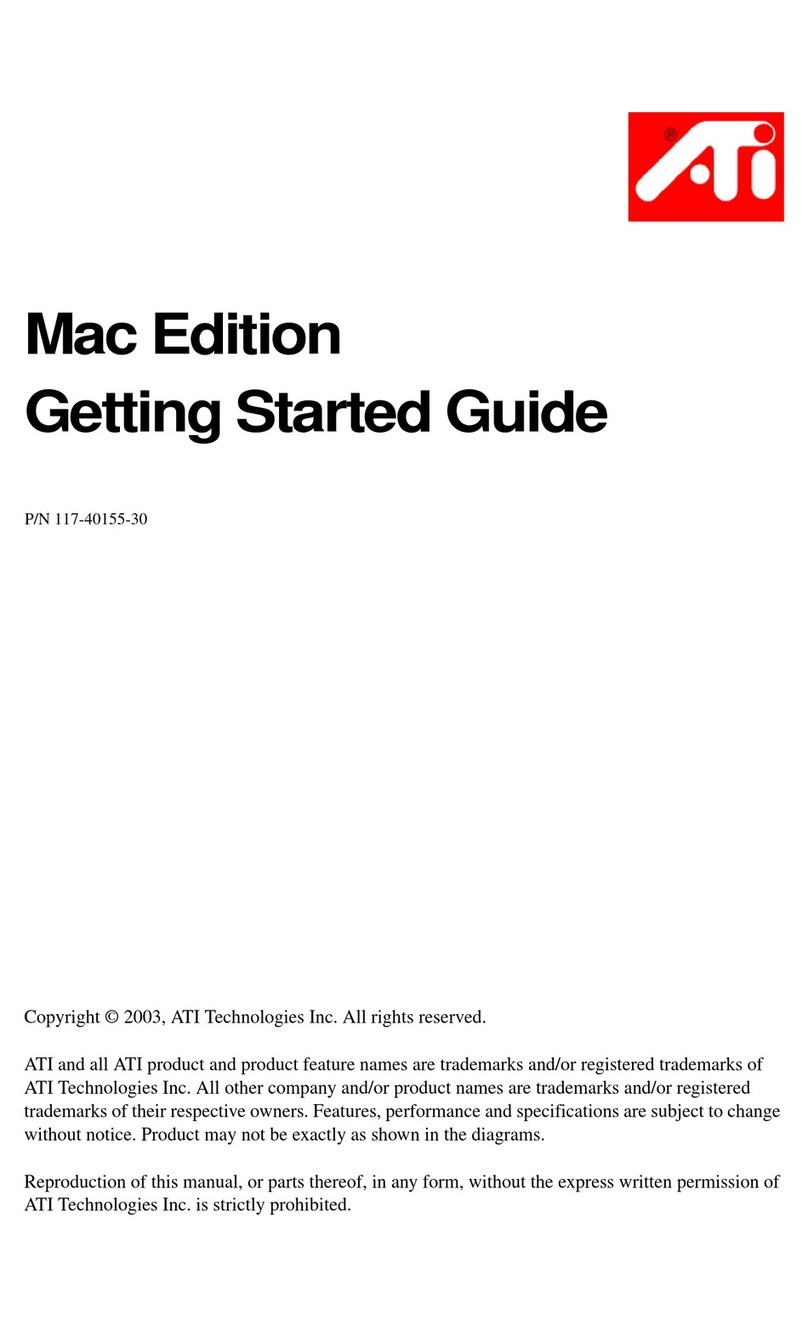
ATI Technologies
ATI Technologies RADEON 9800 PRO Getting started guide
Cypress Semiconductor
Cypress Semiconductor CY62147DV18 Specification sheet

Almaco
Almaco 1660 user manual

Sandberg
Sandberg 133-74 user guide
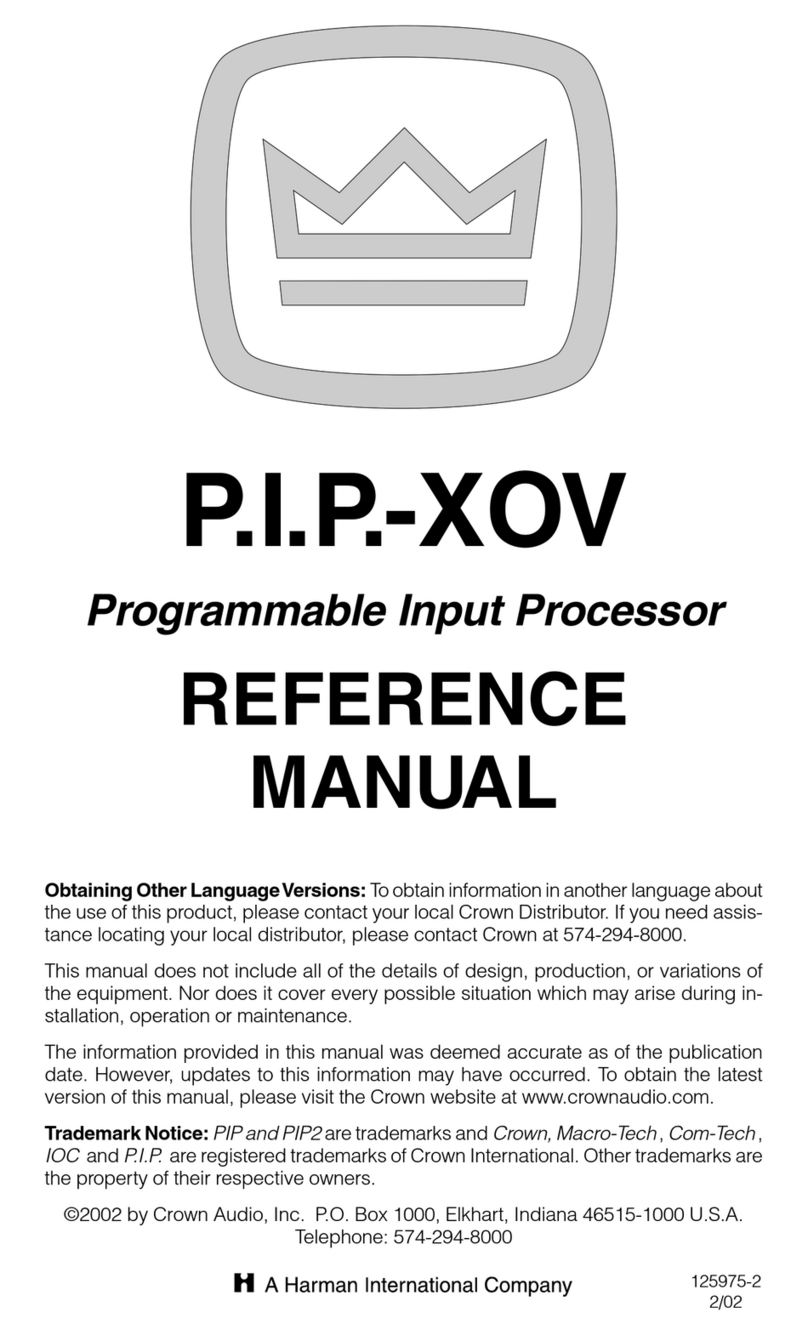
Crown
Crown PIP-XOV reference guide

